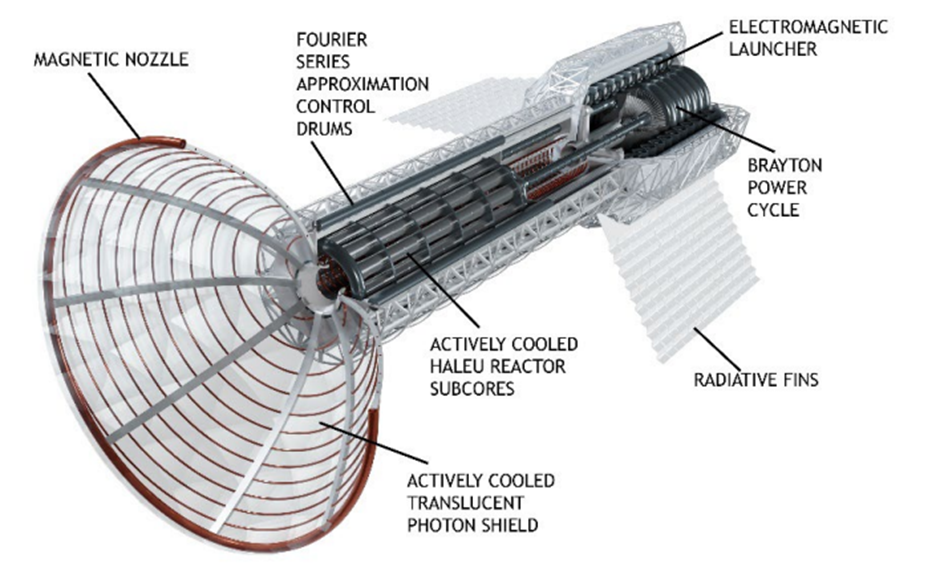Brianna Clements
Howe Industries
The future of a space-faring civilization will depend on the ability to move both cargo and humans efficiently and rapidly. Due to the extremely large distances that are involved in space travel, the spacecraft must reach high velocities for reasonable mission transit times. Thus, a propulsion system that produces a high thrust with a high specific impulse is essential. However, no such technologies are currently available.
Howe Industries is currently developing a propulsion system that may generate up to 100,000 N of thrust with a specific impulse (Isp) of 5,000 seconds. The Pulsed Plasma Rocket (PPR) is originally derived from the Pulsed Fission Fusion concept, but is smaller, simpler, and more affordable. The exceptional performance of the PPR, combining high Isp and high thrust, holds the potential to revolutionize space exploration. The system’s high efficiency allows for manned missions to Mars to be completed within a mere two months. Alternatively, the PPR enables the transport of much heavier spacecraft that are equipped with shielding against Galactic Cosmic Rays, thereby reducing crew exposure to negligible levels. The system can also be used for other far range missions, such as those to the Asteroid Belt or even to the 550 AU location, where the Sun’s gravitational lens focuses can be considered. The PPR enables a whole new era in space exploration.
The NIAC Phase I study focused on a large, heavily shielded ship to transport humans and cargo to Mars for the development of a Martian base. The main topics included: assessing the neutronics of the system, designing the spacecraft, power system, and necessary subsystems, analyzing the magnetic nozzle capabilities, and determining trajectories and benefits of the PPR. Phase II will build upon these assessments and further the PPR concept.
In Phase II, we plan to:
- Optimize the engine design for reduced mass and higher Isp
- Perform proof-of-concept experiments of major components
- Complete a ship design for shielded human missions to Mars






























